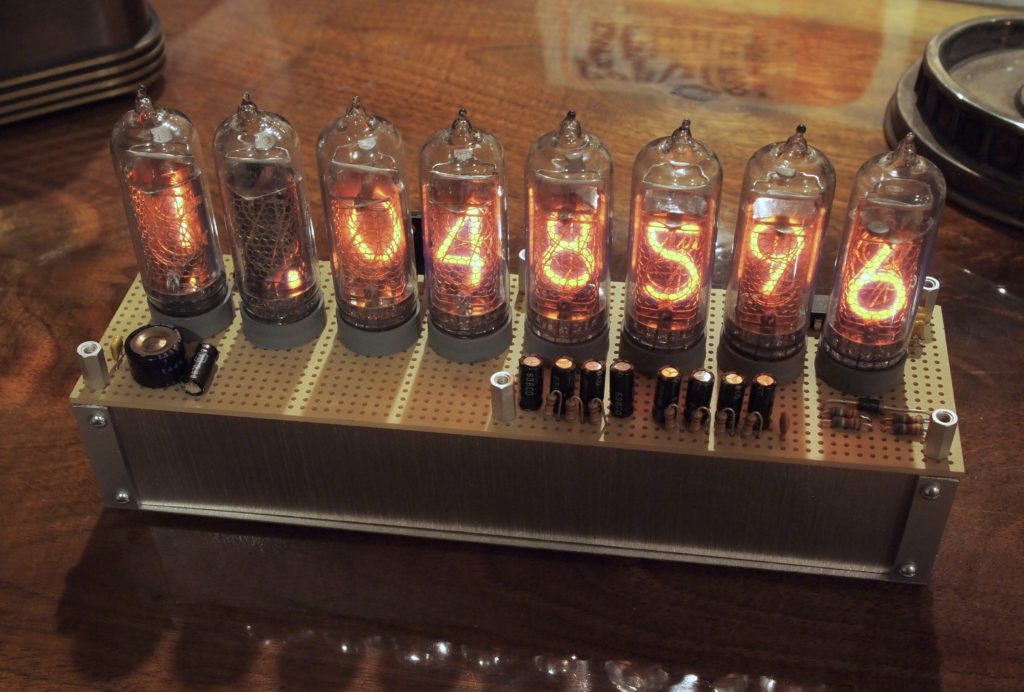
I recently acquired some PCBs for building a Divergence Meter as described on Tom Titor’s site. I’ve been meaning to build one of these for a long time.
I struggled for quite a while trying to figure out how to build the case. I didn’t like the idea of using glue as a structural element, and I thought it ought to be possible to source something other than hex standoffs to form the corner posts. I did manage to find a source for square standoffs – though not in small quantities, but that still left the problem of using glue. Ideally I wanted to use actual screws, but that would have meant tapping some small metal rods. I was getting nowhere, so I went to visit my local model shop and chatted with them about various options. I came away with some styrene sheet, some square plastruct rod and some plastruct angle. I figured I could prototype a case and see if anything came to me. I also bought some steel sheet and some aluminum sheet to see how good the glue approach was.
As I messed around with prototypes, I discovered that #4 screws (such as the screw part of the hex standoffs used on the perfboard) screw into the plastruct rod perfectly, so I went to my local hardware store and picked up the smallest self-tapping screws they had – some #2 – 1/4″ screws, drilled pilot holes in the plastruct rod and tried fixing them to some of the metal sheet I had bought. It gripped really well, so I decided that I would CAD up some parts for a case and get them made at Big Blue Saw.
I also decided that I would support the PCBs on plastic hex standoffs, they needed to be well fixed to the case. 11/16″ standoffs work for the main board, with 10mm standoffs between the main board and the display board. For the screws that screw into the bottom of the plastruct rod, I used #4-40X1/8. I have node idea where I bought them – I can’t find them in my ebay, DigiKey or Mouser orders. They need to be short to clear the self-tapping screws.
I have just finished putting together a case using the parts made by Big Blue Saw, and it works great. I had 10 sets made as each set is then a lot cheaper, so I have many left over I currently have two left that I would be willing to sell for $59 + shipping.
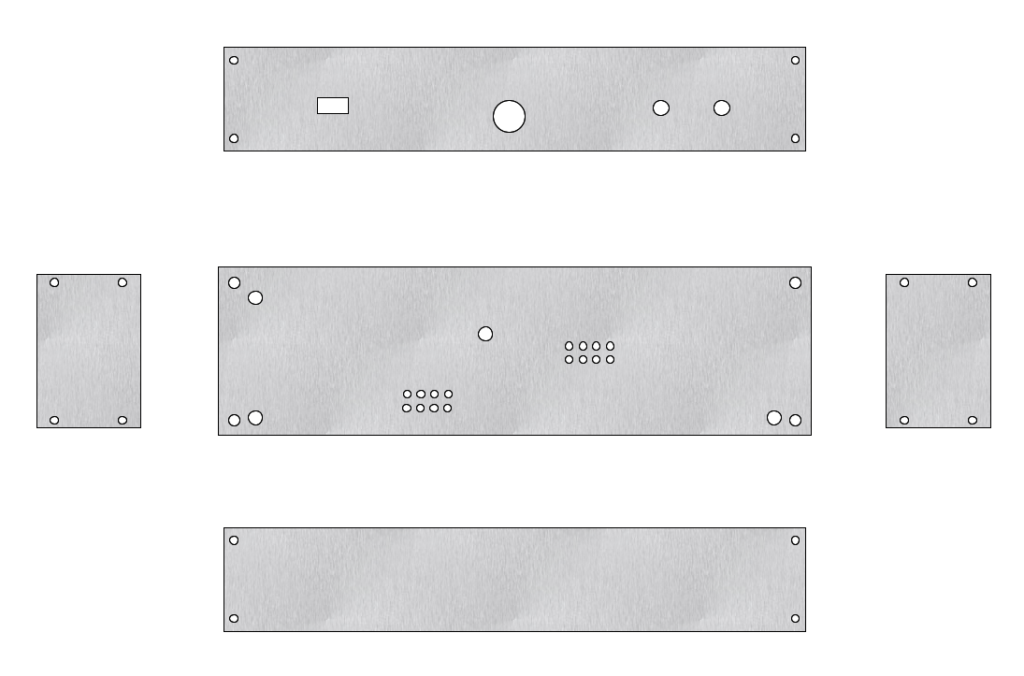
The following pictures show the case in various stages of construction. This first one shows the plastruct rods and angles. The pilot holes in the rods are 1/16″, the holes in the angle are 7/64″, and not shown – but the holes for the hex standoffs in the perfboard are at least 1/8″.
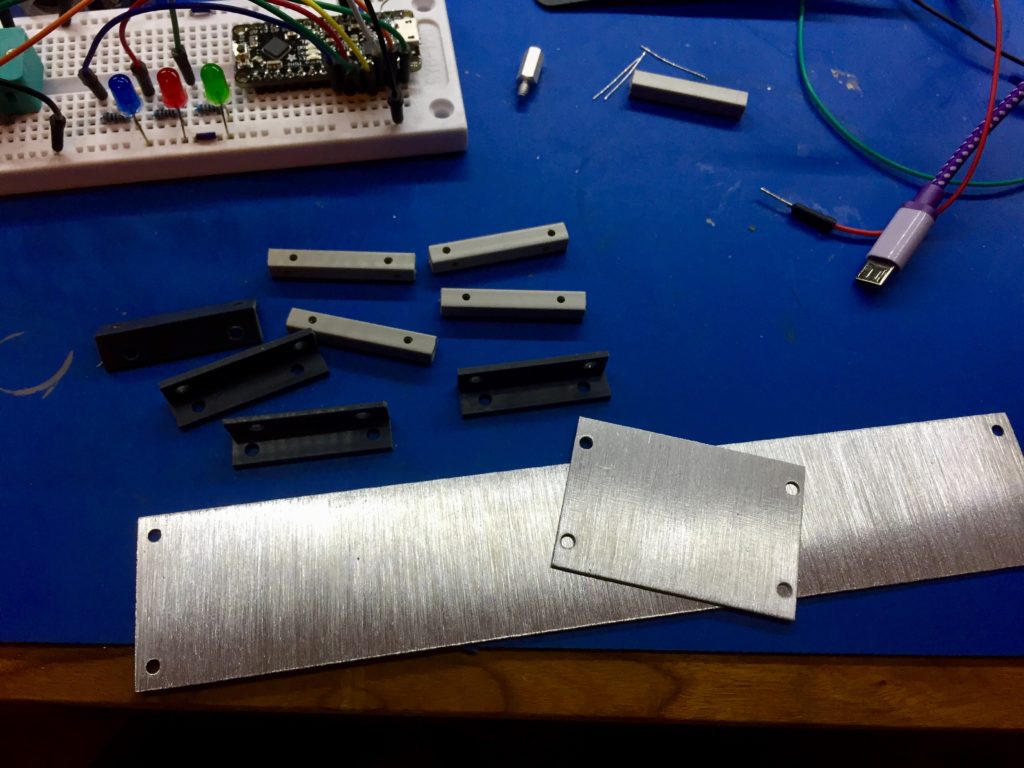
Big Blue Saw offer several finishes. The one below is raw. The edges are very rough, and there are marks left over from the water cutter, so I ordered the rest in basic finish instead.
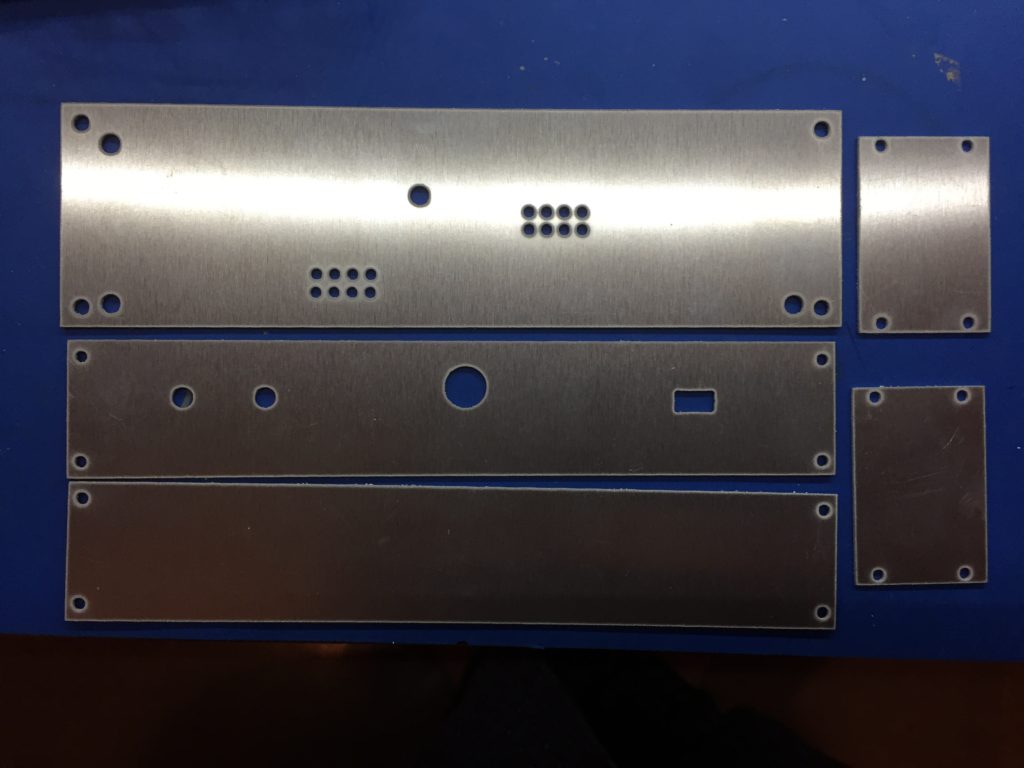
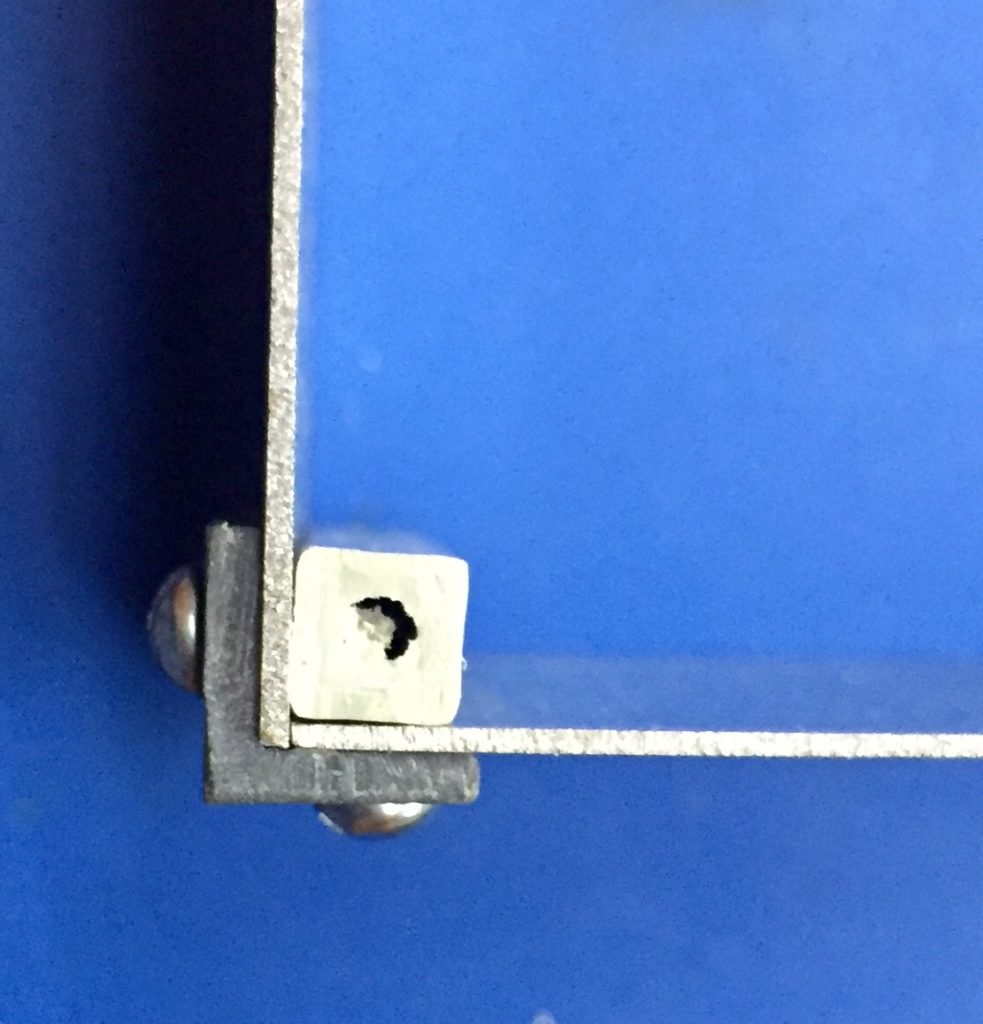
In the photograph below, I have yet to paint the plastruct angle – I was just checking that everything went together.
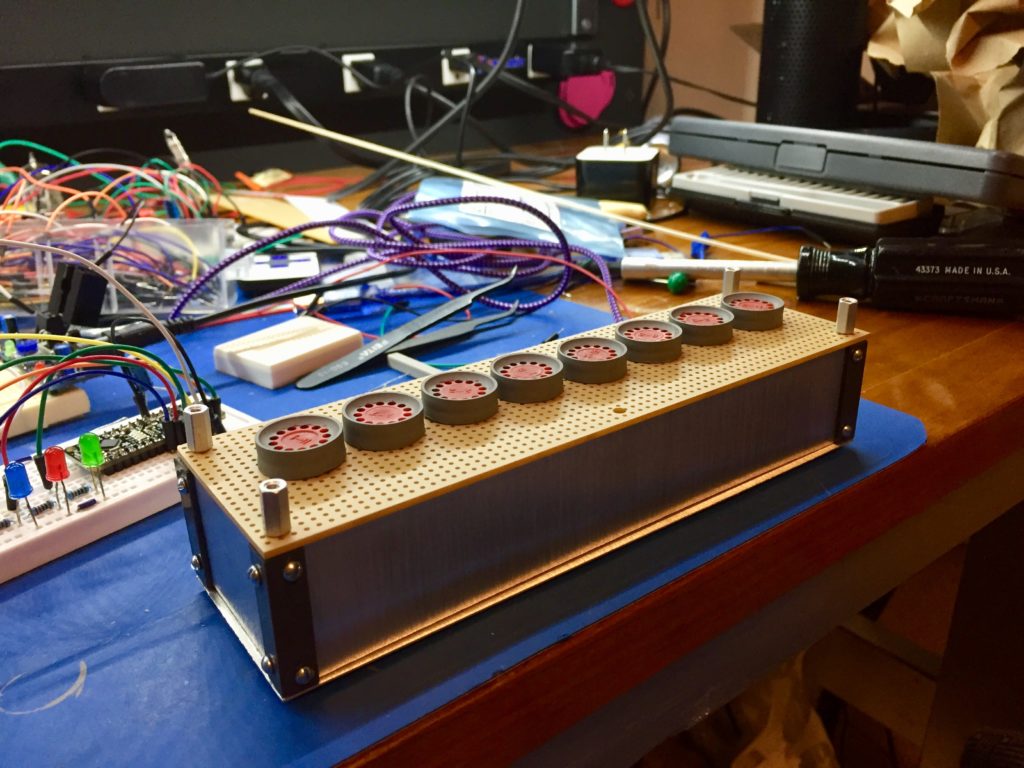
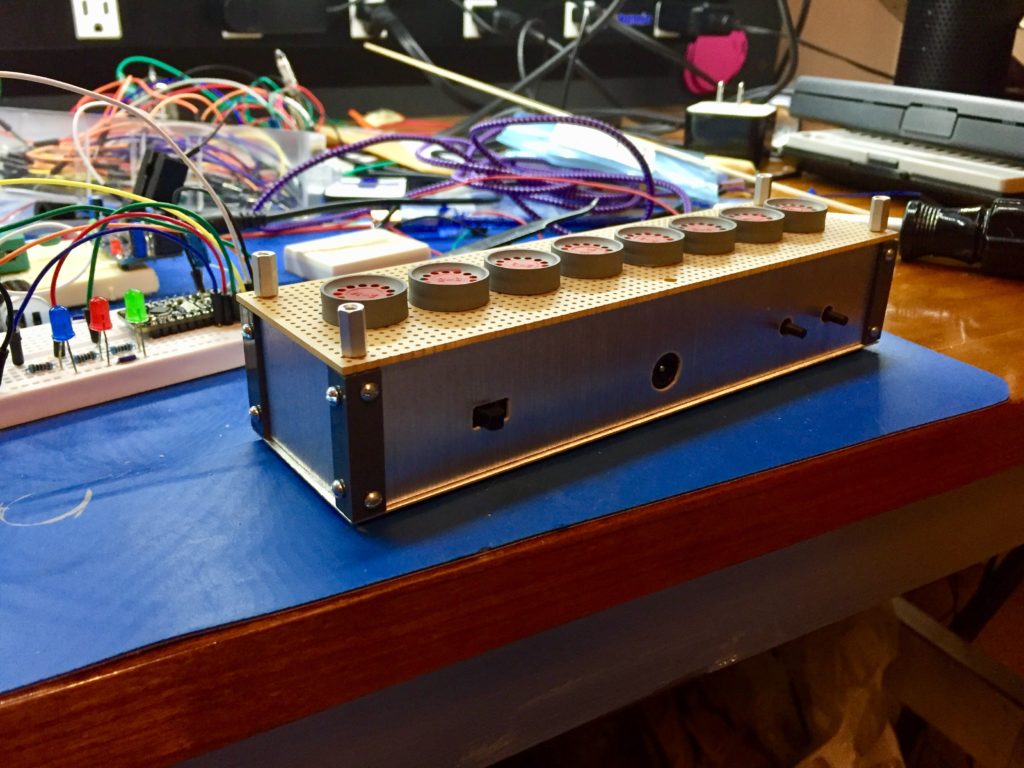
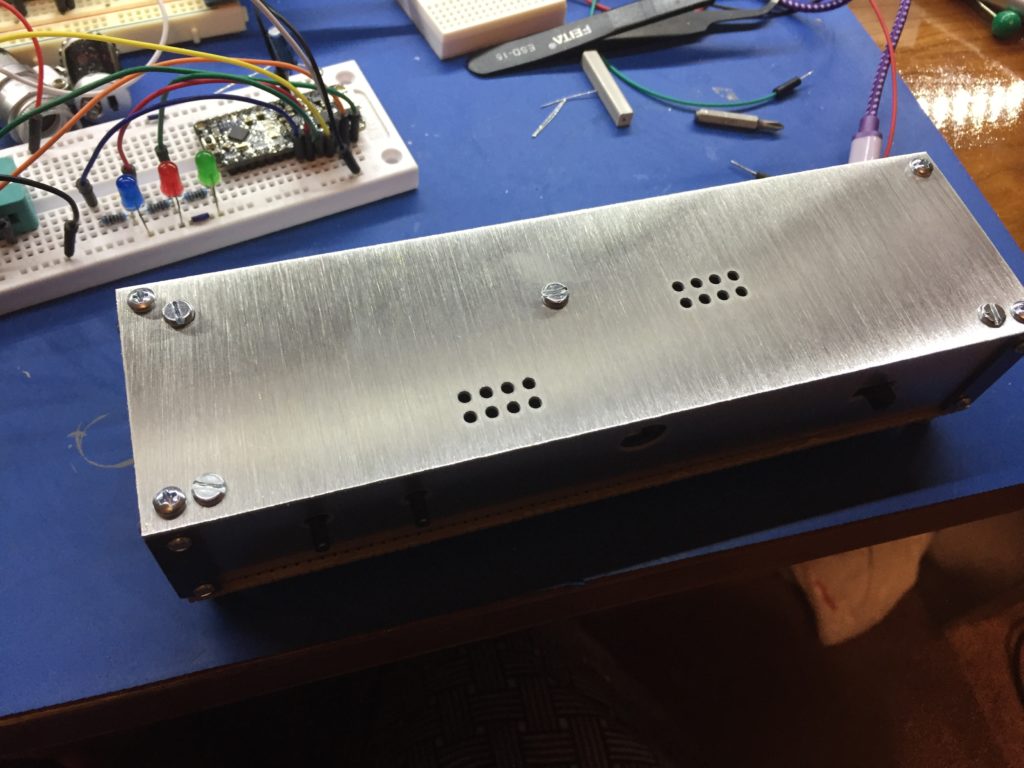
The stencil that Tom provides is slightly different for this case. The holes for the hex standoffs are back where they were with his build #1. In the PDF below I also show cutouts for the tubes with a diameter of 14mm. This is a standard size for things like Forstner bits and it gives you some room for error in drilling these holes!
Perfboard Stencil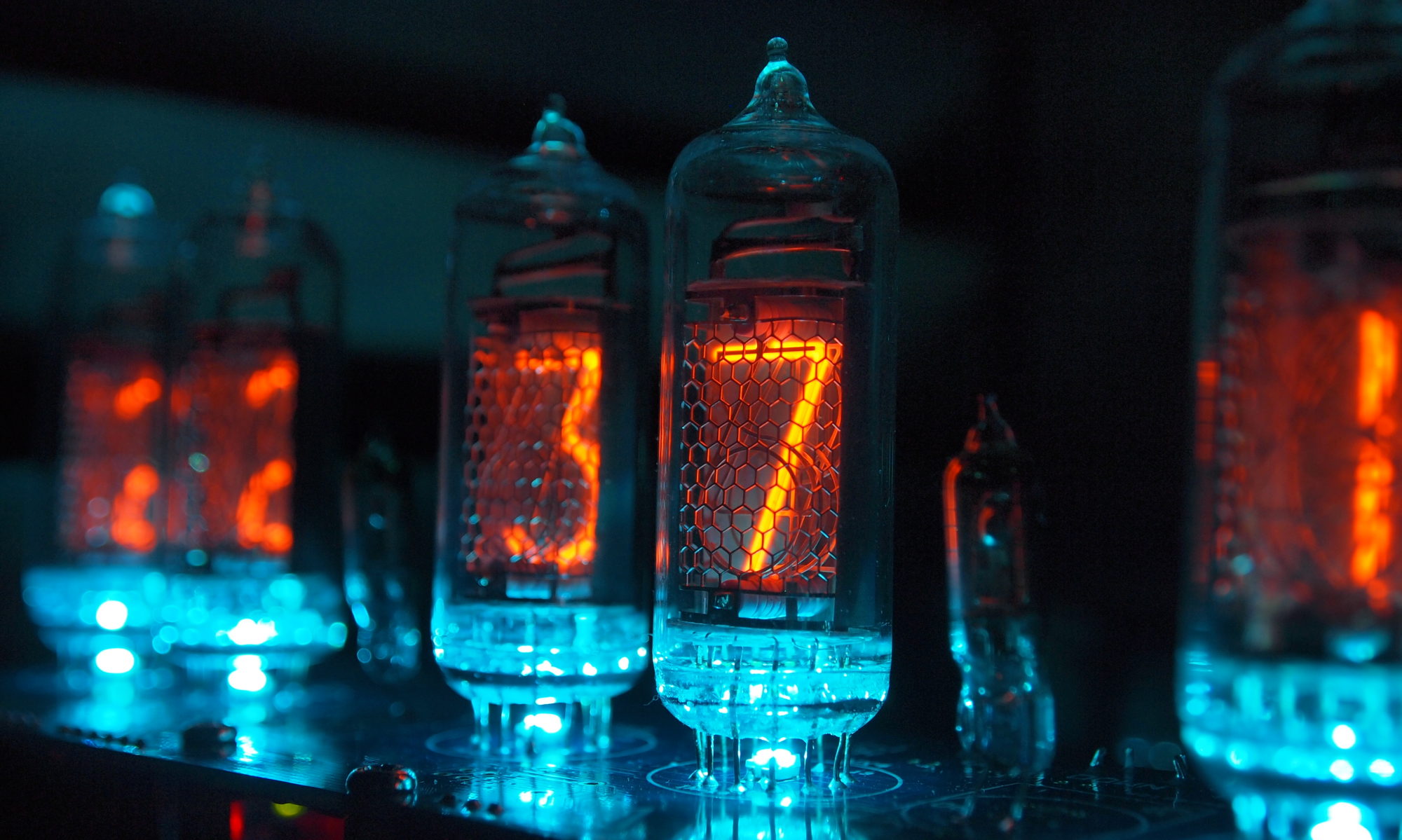
When I made my divergence meter I also found it too expensive to have the metal panels cut pre-cut, but I found a very cheap and easy solution. I went to Lowes and got a 3 foot piece of 1 1/4″ x 1/16″ aluminum that was already the correct height for the sides of the meter. All I had to do was cut it to the correct length for each side and it was perfect! It was a little thicker than what was called for, but you can easily compensate by making the top and bottom perfboards slightly larger. Then you just need to drill the holes in the correct place for the buttons, switch, and power port. For the switch I drilled 2 small round holes and used a square needle file to make them the correct rectangle shape. Once everything was glued together I went over it with some 220 grit sandpaper to give it a nice brushed finish.
If you need some help getting the parts from Big Blue Saw, e-mail me and e can work something out.
I would also like to get in on this
I would also be in for the enclosure parts.
I’d be in for the enclosure as well, please.
OK. The sticking point for me is how to secure the corners. I don’t like the idea of using glue – I don’t have a good track record with it! If anyone has any firm ideas, let me know. If screws are going to be used, it would be best to make the pieces with the holes pre-drilled.
did you order extra PCBs? im interesting in building one myself, also the enclosure is the part that worries me most haha
I got the PCBs from Kyle above. If you want a set, he may still have some. Let me know.
I plan to make several prototype cases out of different materials, just to get ideas about what is possible – I will try the JB weld.
I paid a visit to my local model shop, it was interesting hearing ideas from the point of view of a model maker. They told me about tinned steel. The tinning allows you to solder things to it, which would be a stronger bond. They also talked about using plastic instead, and then finishing it to look like metal. etc. etc.
Yeah if you could get ahold of him and find out that would be great. are they the IN-18 boards?
Thanks!
No, they are the IN-14 boards. I will email him for you.
I’m also interested in buying some PCB’s if anyone still has some? If you do please contact me through my email Luigi.a.costagliola@gmail.com also besides the Nixie tubes what else would I need to purchase to complete my divergence meter?
Hi, I’d be interested in getting the materials for 3 kits. I’d need both enclosures/mounting hardware and PCBs. Do let me know how this goes.
http://www.mouser.com/ProjectManager/ProjectDetail.aspx?AccessID=1313eeed1e
Hi, I was wondering if there are still PCBs available for sale, I’ve been wanting to do this project for a while now. Any help would be appreciated. My email is dillonh11@gmail.com
Thanks!
IN-14 version PCBs are still available on Tindie: https://www.tindie.com/products/Nixiekeith/nixie-divergence-meter-from-tom-titor-in-14-nixies/
I ordered some; they’re excellent quality.
Hi,
I’ve also been looking to do this project in a while, and am also looking to see if there are any PCBs for sale.
I’m based in the UK however, and know this probably makes things even harder to coordinate – but if there are/you know of any UK builders , I’d be happy to get in touch!
Email: hotspringonion@gmail.com
Thanks!
For the case, try and locate a local scrap metal merchant. They often have offcuts and leftovers of a wide range of metals from the industrial sector. They charge very little, and will often even cut the metal to size for you. My local merchant would do such a few pieces for less than $10,–.
I would be interested in getting in on this if its still available.
In reply to your email – yes, I’m definitely still in for a set of enclosure parts. I’ll look forward to further information on this.
Hi, if there are still ones available I am interested in getting one of these. Thank you!
Hey I’d be interested in buying a set of PCBs for this project in case you have any left-over! You can contact me at starcraft66@gmail.com
I’m in interested in buying one of the case parts you have. How could I contact you for more info?